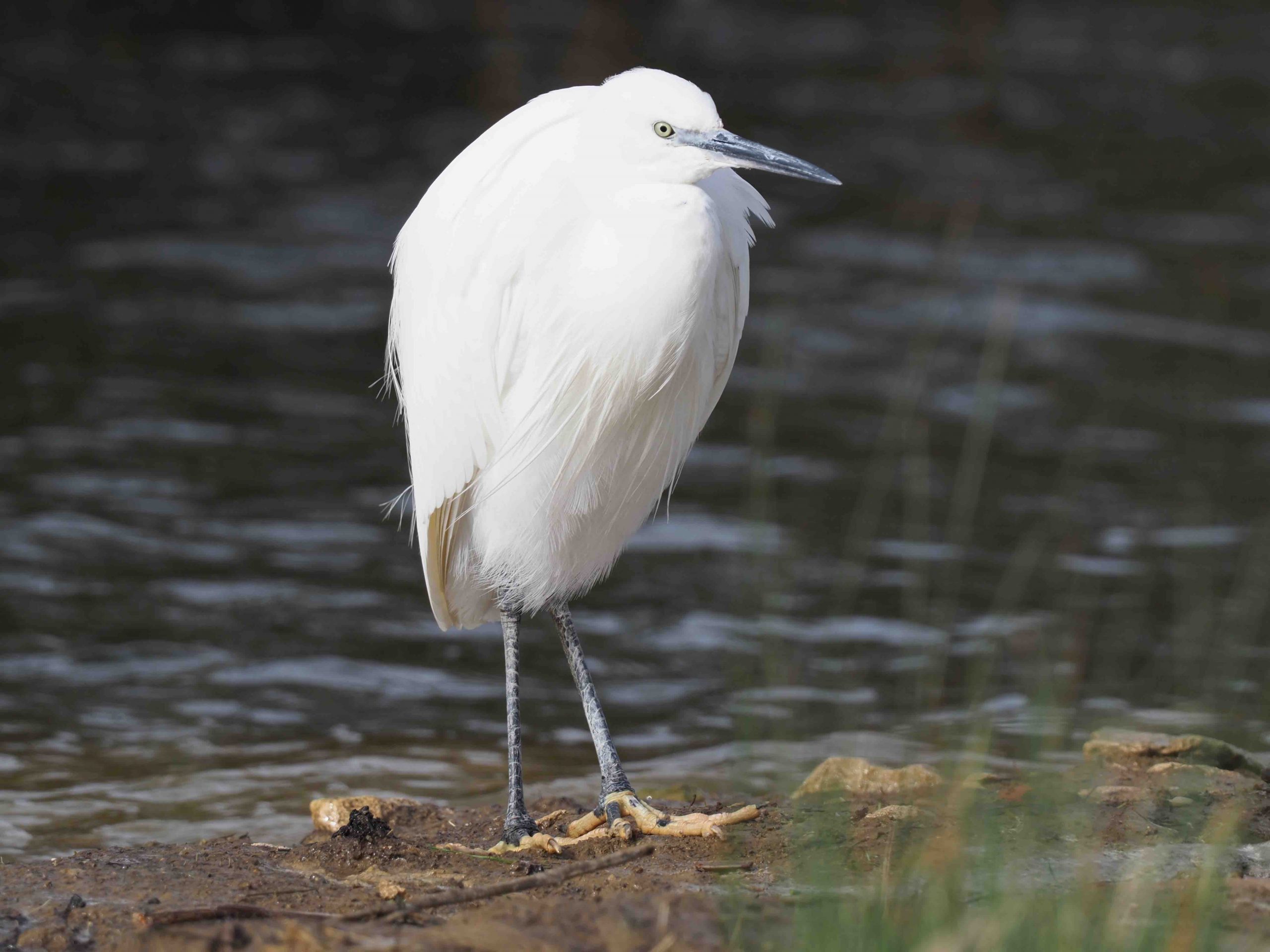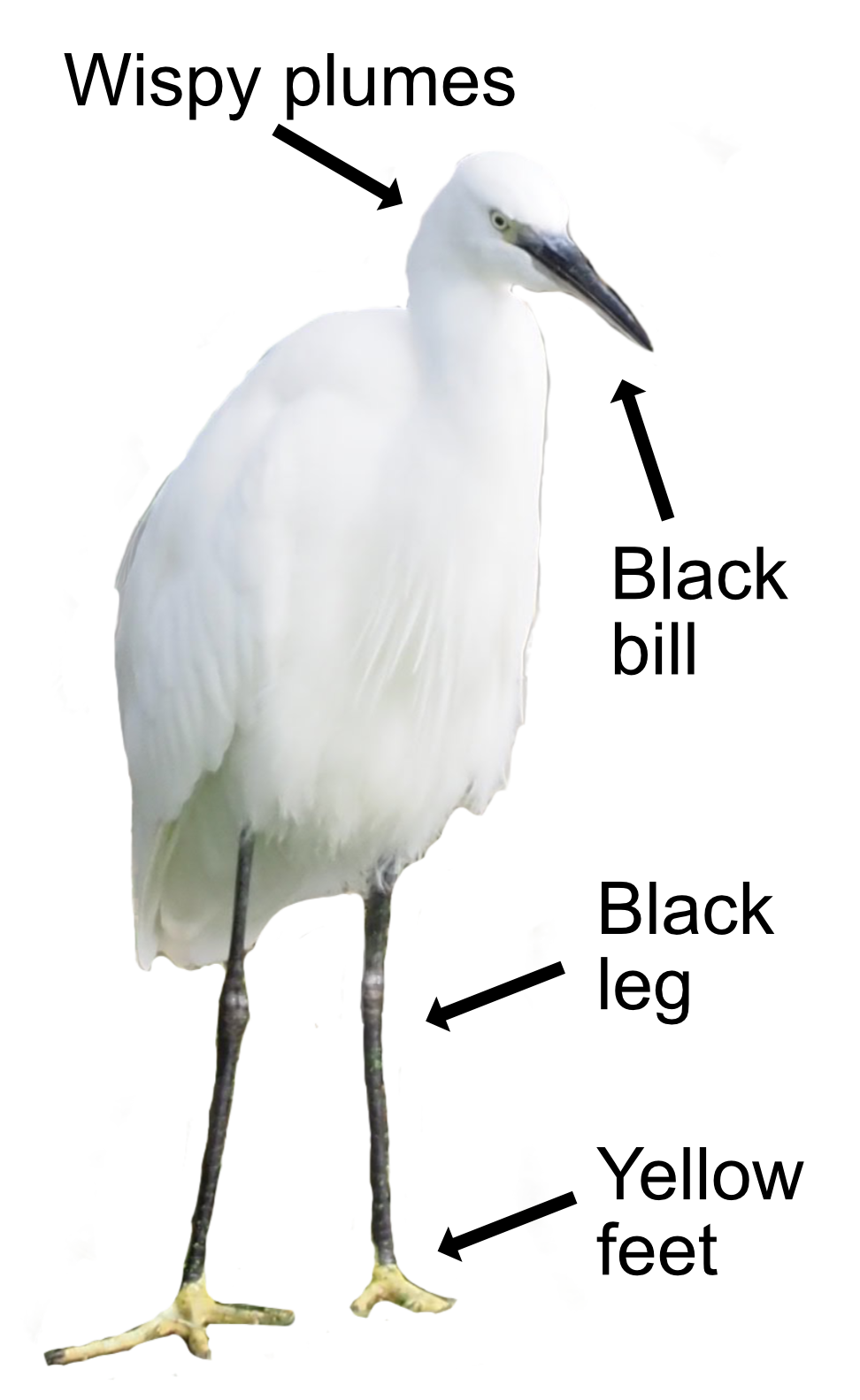
Little Egrets, like herons, are very good at standing still and not doing much. Not so long ago, we considered them a rarity, but now they are a familiar sight on estuaries and wetlands despite having only arrived back here in 1966, the swinging sixties. These are birds with style.
The Little Egret is an elegant white heron with a long slender neck. It has two long feather plumes on its neck, which go wispy in the spring, a black bill, black legs and yellow feet. Like the heron, the feet stick out at the back when it is flying. The wings are broad and look bowed when flying. The Little Egret flies with long leisurely wing beats and its head is drawn back into its body like a heron's. They are generally silent except when in a breeding colony or when annoyed. They croak a deep "arrrrgh!" irritation call when disturbed or pushed from an excellent fishing spot by a rival. The bird equivalent of something unprintable.
The Little Egret feeds on fish, especially sticklebacks, tench, and small carp. They will also eat frogs and aquatic insects. They waggle their feet to stir up the water and disturb prey or else dash through the water, wings flapping for balance, to grab something. Then they will stand still again for hours. They could earn a fortune as a 'bird' statue.

They nest in tree colonies like herons, building a rather rickety nest from twigs. They lay 3-5 eggs which both parents incubate until hatching 21 days later. Both mum and dad feed the young by regurgitating (sicking up) food. The young carefully edge out onto the tree branches at 30 days, after wising up to the shaky state of their nest, and can fly about 10 days later. After nesting, many Little Egrets will migrate south to wintering areas in the Mediterranean and Central Africa, though a few stay here, now our winters are getting warmer.
The Victorians decimated the Little Egret for their white wispy feathers to put in their hats. The bird's feathers had been used in the plume trade since at least the 17th century, but in the 19th century the Victorians took it to a whole new level when it became a major craze and the number of Little Egret skins passing through dealers reached into the millions. In the first three months of 1885, 750,000 egret skins were sold in London, while in 1887 one London dealer sold 2 million egret skins. The Victorians should all be shot! Sadly if they were, you and I wouldn't exist so it is a bit of a conundrum. You can't pick your ancestors.
There are now 2,000 pairs of Little Egrets in Britain and the number is increasing as the weather gets milder. Their Latin name is 'egretta garzetta', which sounds like a magazine reading egret, but comes from the Provençal French 'aigrette' meaning 'egret' and 'garzetta' from the Italian name for an egret. An uninspiring name 'egret egret' for something so beautiful.